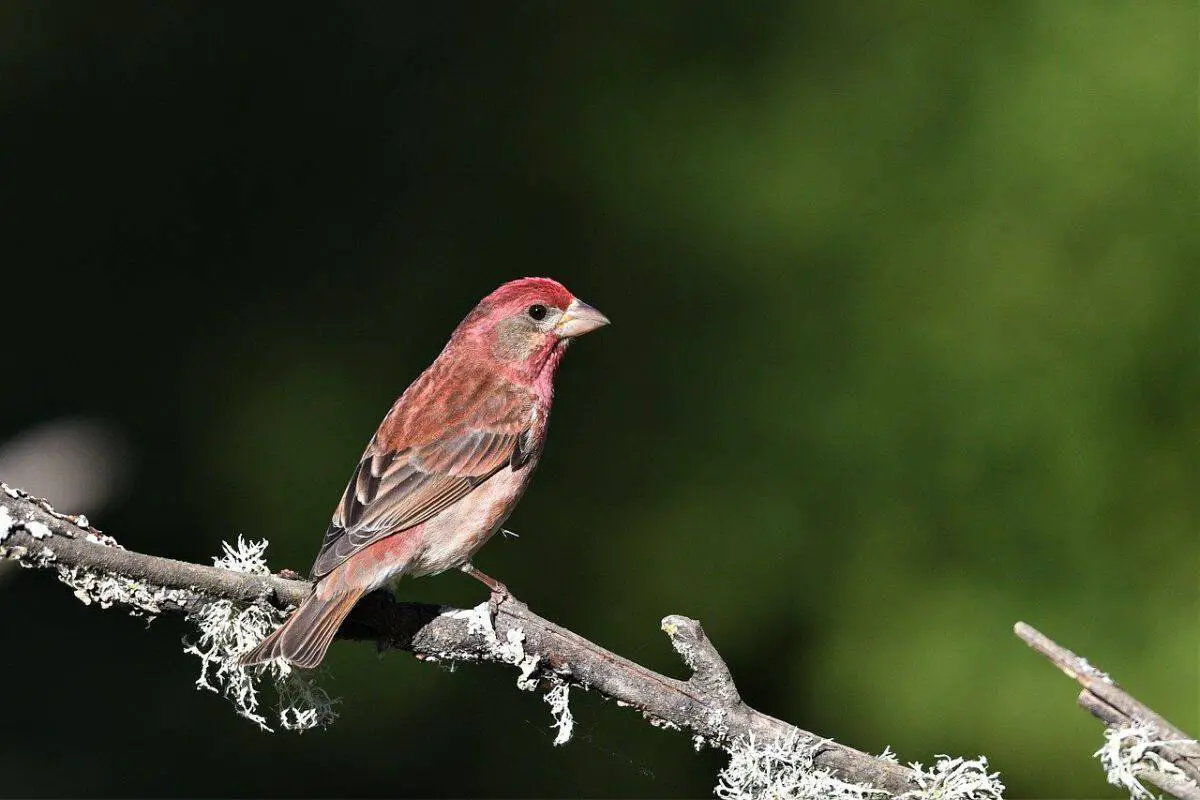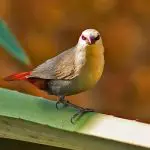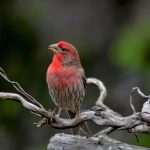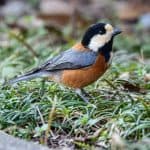Common Name: House Finch
Scientific Name: (Haemorhous mexicanus)| Size | Diet | Range in Hawaii | Status in Hawaii |
|---|---|---|---|
| 5 in. - 6 in. | seeds, fruits, and insects | Common on all islands | Least Concern |
The House Finch (Haemorhous mexicanus) is a delightful and colorful bird species that is known for its bright red plumage and cheerful song. With its playful behavior and sweet melodies, this finch is a beloved sight in its natural habitat. Although it is not a native species to Hawaii, the House Finch has been established on the islands as a naturalized (non-native) resident for a long time.
In this article, we’ll explore the fascinating world of the House Finch and learn more about its establishment in Hawaii.
House Finch
Appearance

The House Finch is a small but eye-catching bird that graces the landscapes of North America. With an average size of about 5 to 6 inches (12.7 to 15.2 centimeters) in length, this feathered marvel showcases a range of vibrant colors that effortlessly catch the observer’s attention. The male House Finch boasts a striking blend of reddish-brown tones, highlighted by streaks of crimson on its head, chest, and rump.
Its wings showcase a combination of brown and black feathers, adding depth and contrast to its appearance. In contrast, the female House Finch exhibits a more muted plumage, featuring streaks of brown and white, perfectly blending with its surroundings.
Diet
These delightful birds have a diverse and adaptable palate that includes a variety of seeds, fruits, and insects. One of their favorite food sources is the small, nutritious seeds found in various plants such as sunflowers, dandelions, and thistles. Additionally, they have been known to relish the nectar from flowers and enjoy indulging in the succulent juices of berries, including raspberries and blackberries.
Insects also play a vital role in the House Finch’s diet, particularly during the breeding season when they provide a rich protein source for growing nestlings. From caterpillars to beetles and spiders, these resourceful birds skillfully capture and devour their tiny prey, ensuring the well-being of their offspring.
Nesting
The House Finch is not just a stunning bird but also a master architect when it comes to nest building. These resourceful creatures create cozy homes using a combination of twigs, grasses, leaves, and other plant materials. They possess a remarkable adaptability and can nest in a wide range of locations, including trees, shrubs, cacti, and even man-made structures such as eaves and ledges.
The female House Finch takes the lead in constructing the nest, meticulously weaving the materials together to form a sturdy cup-shaped structure. She pays close attention to creating a soft and comfortable interior by lining the nest with finer materials such as feathers, animal fur, and soft plant fibers. This attention to detail ensures a cozy and secure environment for their precious eggs.
Speaking of eggs, the female House Finch typically lays a clutch of 3 to 6 pale blue or greenish-blue eggs, delicately speckled with darker markings. Both parents share the responsibility of incubating the eggs, taking turns to keep them warm and protected. After about two weeks of incubation, the eggs hatch, and the nest becomes a bustling hub of activity as the parents diligently feed their hungry hatchlings a diet rich in insects and regurgitated seeds.
Behavior
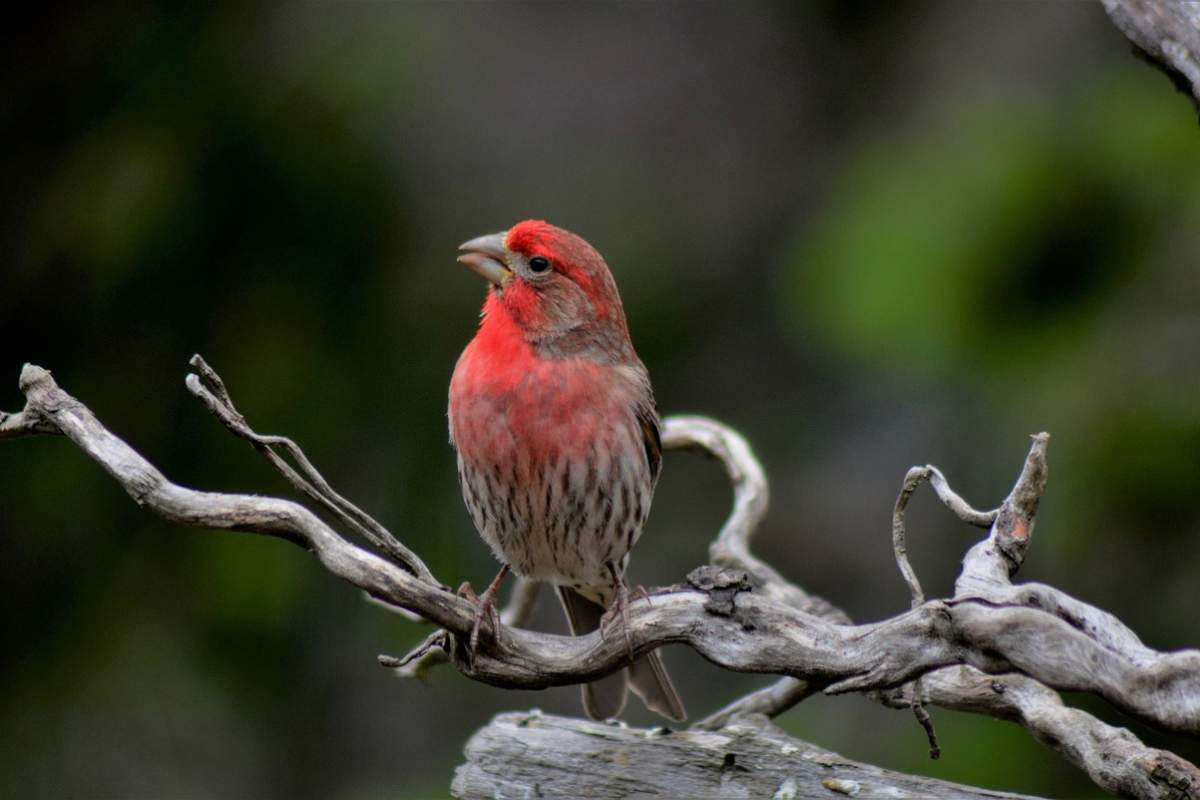
One remarkable behavior of House Finches is their melodious singing. Males are especially known for their vibrant and cheerful songs, which they use to establish territories and attract mates. Their melodious tunes, filled with a mixture of trills, warbles, and chirps, add a delightful soundtrack to their surroundings and serve as a testament to their vocal prowess.
House Finches also possess an intriguing feeding behavior known as “bathing.” When water sources are available, these birds eagerly immerse themselves in shallow pools or birdbaths, splashing and fluttering their wings to clean their feathers. This behavior not only aids in maintaining their plumage but also provides an entertaining spectacle for onlookers.
In addition, House Finches are highly adaptable and have successfully integrated into urban environments. They can often be found exploring backyards, parks, and gardens in search of food and nesting sites. Their curious nature and willingness to interact with human-made structures make them a delight to observe.
Another notable behavior of House Finches is their communal roosting. As evening approaches, they gather in large groups, sometimes numbering in the hundreds or even thousands. These communal roosts provide safety in numbers and allow for social interactions among the birds.
Furthermore, House Finches exhibit fascinating courtship rituals, with males displaying elaborate flight patterns and unique postures to impress females. These courtship displays showcase their vibrant plumage and emphasize their physical fitness as potential mates.
Habitat
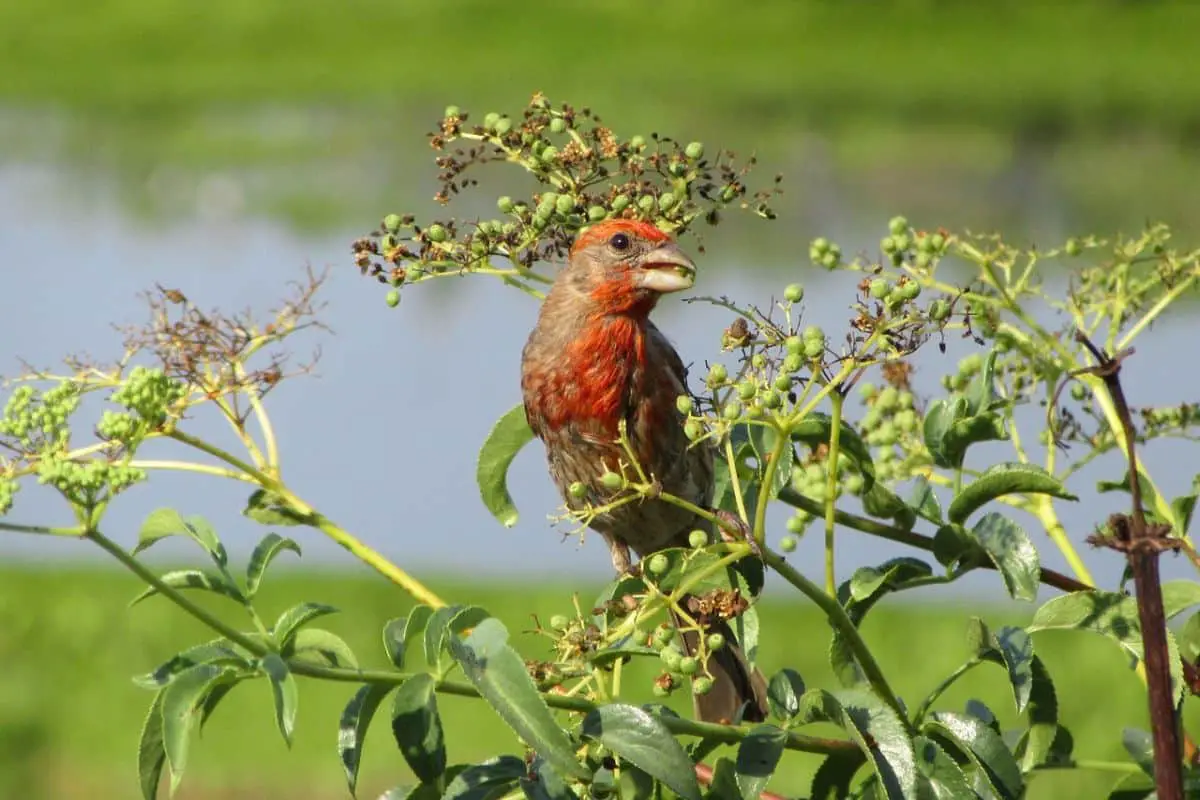
The House Finch is a versatile bird that inhabits a range of environments across North America. From open woodlands to urban areas and even arid deserts, these adaptable birds can be found thriving in various habitats, bringing their vibrant presence to diverse landscapes.
Range
The House Finch, a naturalized resident in Hawaii, was successfully introduced to the Hawaiian Islands in the mid-1800s. They are abundantly established on all eight Southeastern Hawaiian Islands, including Maui and Big Island, and have even reached the Northwestern Hawaiian Islands.
While concerns about their impact on crops exist, damage potential has been exaggerated. House Finches breed in Hawaii from February to August and display variation in head plumage color.
Conservation Status
According to the International Union for Conservation of Nature (IUCN), the House Finch (Haemorhous mexicanus) is classified as a species of “Least Concern.” This means that their population is considered stable and not facing any immediate threats to their survival.
Interesting Facts
1. Disease susceptibility
House Finches have been impacted by an eye disease called “House Finch Conjunctivitis,” caused by a bacteria called Mycoplasma gallisepticum. While the disease can cause severe symptoms and mortality, House Finches have shown some resilience and are gradually developing resistance.
2. Ecological role
House Finches play a crucial role in seed dispersal and pollination as they consume various plant materials. Their presence contributes to the ecological balance of their habitats.
3. Feather mites
House Finches are commonly infested with feather mites, tiny parasitic insects that live on their feathers. These mites, while harmless to humans, can negatively affect the birds by causing feather damage or irritation.
4. Molt patterns
House Finches undergo a molt, or feather replacement, once a year. During this time, they may temporarily lose their vibrant coloration, as the new feathers grow in gradually.
5. Vocal imitation
House Finches have the ability to mimic the songs of other bird species. While they primarily sing their own unique melodies, they may incorporate elements of other birds’ songs into their repertoire.
Frequently Asked Questions
1. Can House Finches hybridize with other finch species?
Yes, House Finches can hybridize with other finch species, such as the Purple Finch and Cassin’s Finch. These hybrid individuals may exhibit a mix of characteristics from both parent species.
2. What is the lifespan of a House Finch?
In the wild, House Finches typically have a lifespan of around 2 to 3 years. However, some individuals have been known to live up to 10 years in favorable conditions.
3. Can House Finches mimic human sounds?
While House Finches primarily mimic other bird species’ songs, they are not known to mimic human sounds or vocalizations. Their mimicry skills are mostly limited to imitating other birds’ calls and songs.
4. Can House Finches be kept as pets?
It is important to note that House Finches are wild birds and are protected by wildlife conservation laws in many regions. Keeping them as pets is generally discouraged, and it is best to appreciate their beauty and behaviors in their natural habitats.
5. Do House Finches migrate during the night?
House Finches are diurnal, meaning they are primarily active during the day. Their migration, when it occurs, usually takes place during daylight hours rather than at night.
